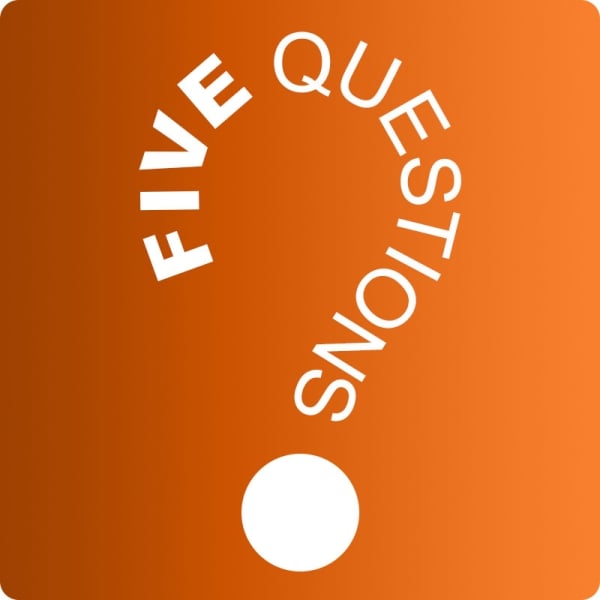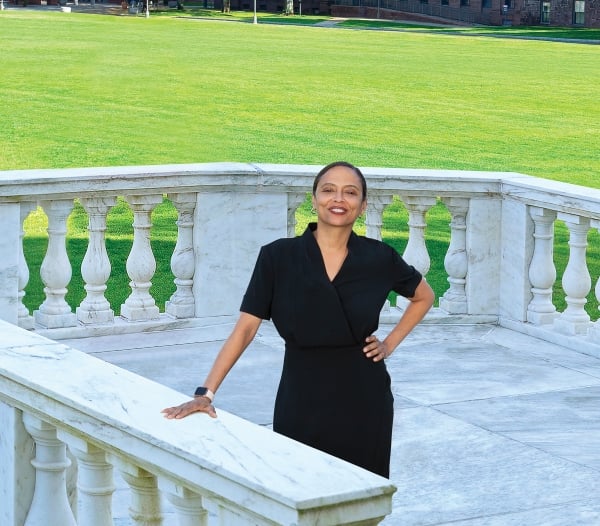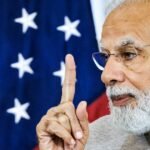Five questions for Wesleyan provost Nicole Stanton
About once a week, a notable higher ed figure stops by the Inside Higher Ed office in Washington, D.C., for some coffee and conversation—presidents and provosts, leaders of national advocacy organizations, research directors, faculty representatives, state commissioners, and board members.

We want to share their insights whenever possible, so we bring you “Five Questions,” which we hope will shed more light on the higher ed landscape and its major players.
This week we welcomed Nicole Stanton, provost and vice president of academic affairs at Wesleyan University. Stanton had an unlikely path to a top administrative role. A first-generation college student from Pittsburgh, she studied dance as an undergrad at Antioch College in Ohio and spent many years performing and choreographing professionally before turning to teaching at Ohio State University. In 2007 she joined Wesleyan, where she spent a decade as a faculty member in the dance, African American studies and environmental studies departments before becoming dean of arts and sciences in 2018.
An “unusual, maybe singular provost” (her own words), she took the job at the tail end of 2019 and got her footing as a series of seismic events hit higher ed, from the COVID-19 pandemic in 2020 to this year’s chaotic campus protests over Gaza.
She talked to Inside Higher Ed about what she’s learned in the past five years, defending the liberal arts and fostering respectful dialogue on campus. The conversation, edited for length and clarity, is below.
- Before you were an academic administrator or even a professor, you were a dancer. How has choreography informed how you manage the disparate, sometimes disharmonious parts of a university?
The way I describe the work that I do as a choreographer is organizing people in space and in time. That’s what I do as a provost: I organize people in space and time. I’ll add that my own approach to choreography, and really to creative practice more broadly, is that it is an opportunity to rehearse and build the world as you want to see it. So that’s what we do. We imagine the world as we want to see it, and we try to build that together. I also have a lot of training as a community organizer—understanding what communities’ needs are, not assuming that one has the answers but engaging your community on what the issues are and finding solutions together.
- You became provost in 2020. What was it like adjusting to the role through some of the most turbulent years in the modern history of higher ed?
It was flying the plane while you build it, through a hurricane. I wasn’t the only one learning fast—there were no best practices on running the institution during a pandemic. We went from a residential, in-person campus where we had faculty members who didn’t use their email to shutting everything down and becoming a fully remote institution in a matter of weeks.
On the other hand, because of that, Wesleyan had to work as a team. We met every day: communications, facilities, health services, the president’s office, finance, everyone. We started with three meetings a day where we had to think about what we’re going to do, how we’re going to do it, what’s going to happen. I learned so much about every university operation in those opening weeks; it would normally take someone years to gain that kind of experience and collaboration. There was no time for silos.
- As a first-generation college student yourself, how do you advocate for underserved students at an “elite” college like Wesleyan?
We have a small but vocal population of first-generation college students. In our Office of Equity and Inclusion, we have a dean for academic success, but this is really her focus—not just understanding what preparation [first-gen students] may or may not have compared to their peers, but also understanding that this is a new culture they’re navigating. Something simple she does is encourage faculty not to have office hours, because if a student is not aware of university parlance, they might think they’re being called into the office to get in trouble, or office hours are for the faculty member to do their work in their office. So now they’re called “drop-in time.”
I think almost all faculty would say, “Of course students should ask me for help.” But it’s the hidden curriculums, the smaller things, that they may or may not understand. Who feels comfortable asking questions, who feels comfortable looking for feedback? Faculty actually have to make an extra effort to engage those students, to understand how they fit into things.
- When the encampment protests swept across campuses in the spring, Wesleyan was one of a handful of colleges that seemed to be actively trying to defuse the tension between administrators and students as opposed to cracking down. What effect do you think that tactic had on how things played out there?
I think we would be in a different place. Certainly, that came from President [Michael] Roth’s leadership, but it was also the community ethos, from the Board of Trustees to students’ parents. Wesleyan has always been a space of student activism, and it would be out of character to take a heavy-handed approach.

Stanton on Wesleyan’s Middletown, Conn., campus.
The vice president for student affairs and I were lucky that we had a colleague on campus who is a trained mediator working in our human rights network minor that we have, who does really high-level negotiations. He’s visiting us from the University of Seoul in Korea, and so the three of us were charged with negotiating with the students. I think it was a 10-day process, for many hours a day, and that’s how we came up with our series of agreements. I do think it started us off on a good foot. [Last month Wesleyan rejected a divestment resolution and is back at the table with student groups.]
I got thousands of emails, literally thousands, telling me why I was wrong [to negotiate with students]. I agree that you do have to have community standards of what’s acceptable. Sometimes our students have crossed those, and we’ve had to say, “This is unacceptable and there are consequences.” But in those [negotiation] meetings, it was actually inspiring. We started with, what are our shared values? What do we believe in? We want the world to be a better place; we love being a part of the Wesleyan community; everything we talk about from here on out has to be checked back to those values. I feel like those students learned a lot, we learned a lot, about dialogue across difference, compromise and making effective change.
- You’ve taught dance, African American studies and environmental studies during your decades as a professor—all programs that have been mercilessly cut by universities across the country as skepticism about higher ed value rises. How do you feel about students losing those opportunities, and how do you protect them at Wesleyan?
In many ways I feel like I embody the answer in the work I’m doing right now. I was a first-generation, low-income woman of color college student, so the idea that dance was a viable area of study was far from my mind. But through those experiences, I feel I’m better positioned in any kind of leadership environment than many people who come up through a business background, because I have a hands-on sense of how to organize people, how to manage a crisis without a blueprint. That really came in handy during the pandemic: I have been trained to make a decision based on what is around me, and I think the arts does that like no other discipline.
At Wesleyan, I do think we’re lucky we still have robust engagement in the arts and humanities that other institutions don’t. But it is going down in a lot of ways, and more students have more pressure from families not to focus on these areas of study. But I think the skills that one learns in the humanities and the arts allows you to be effective no matter what field you go into. It’s not a check box. It’s not to memorize the information and regurgitate it. It is more the capacity to innovate, to be creative, to collaborate, and I think these disciplines really do provide that.
This has always been part of the ethos of Wesleyan: that there is not a sharp divide between theory and practice. You don’t have dancers who don’t read or readers who don’t dance—everybody does everything.
You may be interested

Jan 2: CBS News 24/7, 10am ET
new admin - Jan 02, 2025Jan 2: CBS News 24/7, 10am ET - CBS News Watch CBS News Police share new information on deadly New…

Ava Max Asks Fans to Stop Leaking Her Music: ‘Respect My Art’
new admin - Jan 02, 2025[ad_1] Ava Max keeps finding leaks of her demos online — and she wants it to stop. On Thursday morning,…

Samsung’s cheap Galaxy Fit 3 fitness tracker is coming to the US
new admin - Jan 02, 2025Samsung first released the Galaxy Fit 3 in several countries outside the US last February. The device comes equipped with…




































